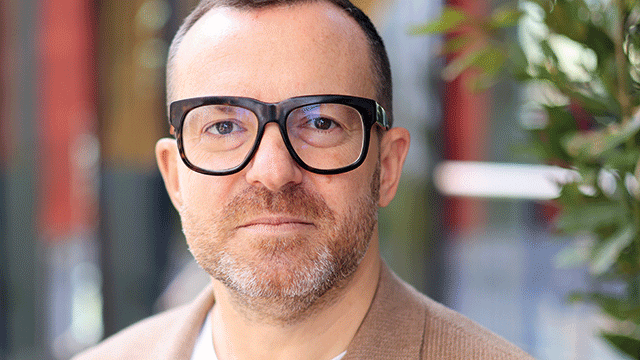‘From potential to reality’: GSK chair on lifting life sciences
“No longer do we want to talk about the potential of the UK as a scientific superpower. We want to talk about the reality of it,” said GlaxoSmithKlein chair Sir Jonathan Symonds as he opened EG and Bidwell’s Creating a Scientific Superpower event last month.
Symonds (pictured) is on a mission to take the UK’s science and technology industries to the next level. With Sir John Bell, University of Oxford professor and chair of Geonomics England’s science advisory committee, Symonds is working to build a government-backed, long-term strategy for the UK life sciences sector.
“If we want to become a global science superpower, we must have a machine that works from end to end and is seamless,” he said. “Right now, when you turn that machine on, you hear the gears clunking and they are not efficient.”
“No longer do we want to talk about the potential of the UK as a scientific superpower. We want to talk about the reality of it,” said GlaxoSmithKlein chair Sir Jonathan Symonds as he opened EG and Bidwell’s Creating a Scientific Superpower event last month.
Symonds (pictured) is on a mission to take the UK’s science and technology industries to the next level. With Sir John Bell, University of Oxford professor and chair of Geonomics England’s science advisory committee, Symonds is working to build a government-backed, long-term strategy for the UK life sciences sector.
“If we want to become a global science superpower, we must have a machine that works from end to end and is seamless,” he said. “Right now, when you turn that machine on, you hear the gears clunking and they are not efficient.”
After what was a “slow start” following its launch in 2021, Symonds said the 10-year “life sciences vision” is “now beginning to get some real momentum”. The sector should not doubt governmental support, he added, noting that the past two Life Sciences Council meetings were attended by the chancellor and prime minister respectively, showing that “the government commitment to deliver on this is significant”.
Despite the likelihood of further governmental upheaval with a general election looming, the vision has been created as a “non-political document and is supported right across parliament”, according to Symonds.
Realignment and investment
The vision hinges upon three strands: the NHS; leading higher education institutions, specifically the universities of Oxford and Cambridge; and businesses that provide tangible investment into research, resources and sector growth.
First up is realignment and investment in the NHS, which is at the centre of the plan. “One of the greatest challenges that exists within the health system today is trying to make sure that we have the right balance between the things that need to be done as a matter of urgency, [including] backlogs, waiting lists and the ambulance system, while at the same time investing in the future,” said Symonds.
“Through the Life Sciences Council and other vehicles, we have got the NHS to recognise that the NHS in three years’ time, in five years’ time, in 10 years’ time does need to look different.”
The second pillar of the strategy draws on the “outstanding academic and scientific resources that we have through the university system”, combined with national scientific agencies including UK Research and Innovation, the Medical Research Council and the Health Research Authority. The UK already has a talent base which is vital to the success of the country as a worldwide leader in science and technology but must continue to attract and retain the best talent through such coalitions.
“In many ways, the Oxford-Cambridge-London triangle is the engine of science in this country,” said Symonds.
“We have to understand the specific skills basis in the regions around the UK, so we are not trying to duplicate activities across the country, but are really deepening and concentrating those skills so that we have clear competitive advantage and are attractive to everyone around the globe.”
Package for growth
Improving systemic problems in the NHS and cross-pollination of ideas and resources are not all it takes. A third pillar is required to implement significant change – encouraging more inward investment and continued investment from companies already active in the UK.
This will help to ensure that companies that can contribute to the life sciences landscape in the UK not only “want to start here” but also “want to grow here, want to invest, want to list and want to become sizeable companies in the UK”.
The chancellor’s recent launch of a £650m “Life Sci for Growth” package is a key step, Symonds said, but while “the money that continues to flow [into the sector] is quite significant… the government money in this sector is multiplied many times over by the private investment that goes alongside it”.
He added: “This series of announcements was really a concerted effort by the government and by the constituent parts of life sciences to make sure that this machine works well.”
Future focus
It remains the case that money talks. “By the end of this decade, we will not have made the case for the potential in the wealth creation opportunities of this sector if we are not driving substantial sums of money into life sciences,” Symonds said.
But money isn’t everything for the success of the UK as a scientific superpower – it is also the availability of quality space for labs, offices, educational space and housing for all those in the industry to be able to function in a symbiotic manner that will further the work of the sector.
Hence, Symonds’ advice is simple: “Look at these initiatives in two ways. It’s not just about money continuing to flow into the sector, but it is about a deep determination from all participants in this industry to make sure that the basics work, and I would absolutely include in that basis the availability of lab space and the infrastructure that is necessary.”
To send feedback, e-mail chante.bohitige@eg.co.uk or tweet @bohitige or @EGPropertyNews











